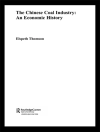Following over twenty years of war, Sri Lanka’s longest cease-fire (2002-2006) provided a final opportunity for an inclusive peace settlement between the Sri Lankan government and the Liberation Tigers of Tamil Eelam (LTTE). However, hostilities resumed with ever increasing desperation and ferocity on both sides, until the LTTE were overcome and largely eradicated in 2009.
This book provides a contextualised analysis of the effects of war on a small Tamil community living in northern Sri Lanka during the cease-fire period. It examines how the society changed and adapted in order to accommodate the upheaval and destruction of war, and its inevitable resumption. In particular, it focuses on the nature of suffering through an exploration of a well-known ritual: Thuukkukkaavadi that transformed the experience of pain and suffering and contributed to a process whereby many village communities could come together in a demonstration of strength and resilience.
It contributes to studies on violence, reparation processes of so-called ‘post-conflict’ societies and the medical anthropology of healing. It questions assumptions concerning the nature of suffering and critiques the application of western categories in settings like northern Sri Lanka, where entire communities have been silenced by political violence. The book therefore presents a claim for more culturally specific understandings of what constitutes suffering and is of interest to students and scholars of South Asian Studies, Conflict Resolution, and Social and Cultural Anthropology.












